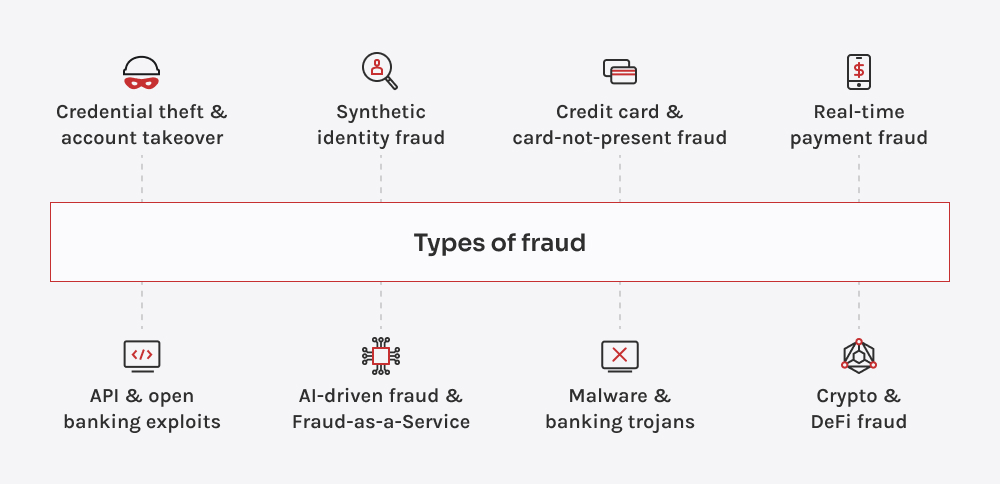| Tecnologia | Come funziona | Caratteristiche principali | Soluzioni più diffuse |
| Sistemi di gestione delle frodi (FMS) | Piattaforme centralizzate che aggregano i dati sulle frodi, analizzano le transazioni e attivano gli allarmi in tempo reale. | Monitoraggio delle transazioni, gestione dei casi e valutazione del rischio in tempo reale | NICE Actimize, FICO Falcon, SAS Fraud Management |
| AI & ML | Rileva le attività fraudolente analizzando modelli, anomalie e cambiamenti comportamentali. | Analisi predittiva, rilevamento delle anomalie, modelli di apprendimento adattivo | Feedzai, Darktrace, IBM Trusteer, DataVisor. |
| Blockchain | Previene le frodi fornendo registrazioni immutabili delle transazioni e una verifica decentralizzata dell'identità. | Sicurezza crittografica, contratti intelligenti, libri contabili a prova di manomissione | Timbro fiduciario, Evernym, IBM Blockchain Fraud Prevention |
| Autenticazione biometrica e basata sul rischio (RBA) | Utilizza la biometria fisica e comportamentale per verificare le identità e valutare il rischio in modo dinamico. | Scansione delle impronte digitali, riconoscimento facciale, biometria comportamentale, punteggio dinamico del rischio | BioCatch, Nuance Gatekeeper, Jumio, Onfido |
| Intelligenza e impronte digitali dei dispositivi | Identifica gli utenti fraudolenti analizzando le caratteristiche del dispositivo, la geolocalizzazione e i modelli di connessione. | Tracciamento IP, binding dei dispositivi, rilevamento delle anomalie | ThreatMetrix, iovation, FingerprintJS |
| Rilevamento dell'identità sintetica | Utilizza l'intelligenza artificiale per rilevare le identità falsificate che combinano dati reali e falsi per gli schemi di frode. | Raggruppamento di identità, riconoscimento di modelli guidato dall'intelligenza artificiale, rilevamento di documenti falsi | Socure, Sift, Experian CrossCore |
| Rilevamento delle frodi basato su grafici | Mappatura delle relazioni tra conti, dispositivi e transazioni per scoprire le reti di frode e i money mules. | Analisi delle reti sociali, analisi dei collegamenti tra entità, rilevamento di anelli di frode | Quantexa, Linkurious, GraphAware |
| Monitoraggio del dark web | Scansiona i forum clandestini, i marketplace e i database trapelati alla ricerca di credenziali compromesse e attività fraudolente. | Intelligenza delle minacce basata sull'intelligenza artificiale, avvisi di fuga di credenziali, monitoraggio in tempo reale | Futuro registrato, SpyCloud, CybelAngel |

















